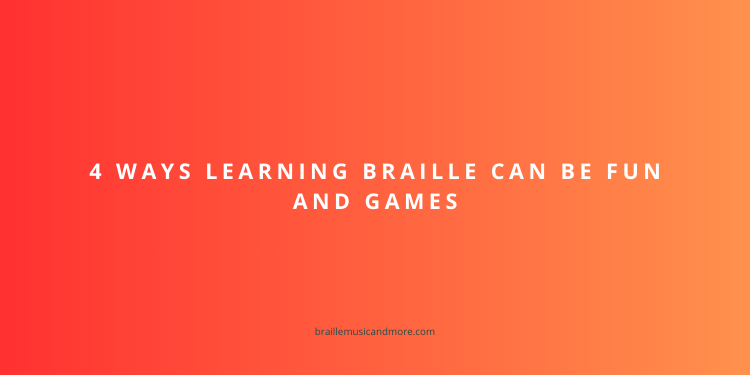Embarking on the journey to learn Braille doesn’t have to be a mundane task. While it’s undoubtedly a valuable skill for individuals with visual impairments, incorporating elements of fun and games into the learning process can make it an enjoyable and engaging experience. In this blog post, we’ll explore four ways learning Braille can be transformed into a delightful adventure.
Braille Board Games
Why not turn the learning process into a game night? Incorporating Braille into popular board games can make learning both entertaining and educational. Games like Scrabble or Boggle can easily be adapted for Braille learners. By replacing traditional letter tiles with Braille-coded ones, players can have fun while reinforcing their Braille skills. This not only adds an element of competition but also encourages social interaction, making the learning process more enjoyable.
For those who prefer solo activities, there are Braille crossword puzzles and Sudoku games available. These games not only enhance Braille proficiency but also stimulate cognitive abilities, adding an extra layer of enjoyment to the learning experience.
Interactive Braille Apps
In our tech-driven world, numerous interactive apps have been developed to make learning Braille a digital and enjoyable experience. These apps often include gamified lessons, quizzes, and challenges that cater to different learning styles. With features such as audio feedback and interactive exercises, learners can receive instant gratification and track their progress, turning the learning process into a rewarding game.
Some apps even incorporate storytelling, allowing users to read Braille stories and solve puzzles as part of the narrative. This immersive approach not only teaches Braille but also fosters a love for reading and storytelling.
Braille Art and Crafts
Learning Braille doesn’t have to be limited to linguistic skills. Introducing Braille into art and craft activities can make the learning process more tactile and enjoyable. Creating Braille art involves using materials like clay, beads, or even embroidery to form Braille characters. This not only helps learners memorize the Braille alphabet but also enhances their tactile sensitivity.
Consider organizing a Braille art exhibition or collaborative projects within the community. This not only showcases the creative side of learning Braille but also fosters a sense of community and support among learners. By turning Braille into a hands-on, artistic endeavor, individuals can connect with the language on a deeper level.
Accessible Storybooks and Audiobooks:
For those who love storytelling, incorporating Braille into accessible storybooks and audiobooks can be an engaging method of learning. Many classic and contemporary books are available in Braille formats, allowing learners to follow along and practice their skills while enjoying a good story.
Additionally, audiobooks with corresponding Braille texts can create a multisensory learning experience. Learners can listen to the narration while simultaneously feeling the Braille characters, reinforcing their understanding of the language. This approach not only facilitates language acquisition but also instills a love for literature, making the learning journey more enjoyable.
Conclusion
Learning Braille doesn’t have to be a solitary endeavor. By infusing elements of fun and games into the process, individuals can transform their journey into an enjoyable adventure. From board games to interactive apps, arts and crafts activities, accessible storybooks, and even escape rooms, there are numerous creative ways to make Braille learning a rewarding and entertaining experience. As we embrace these innovative approaches, we not only empower individuals with visual impairments but also promote inclusivity and understanding within our communities.







